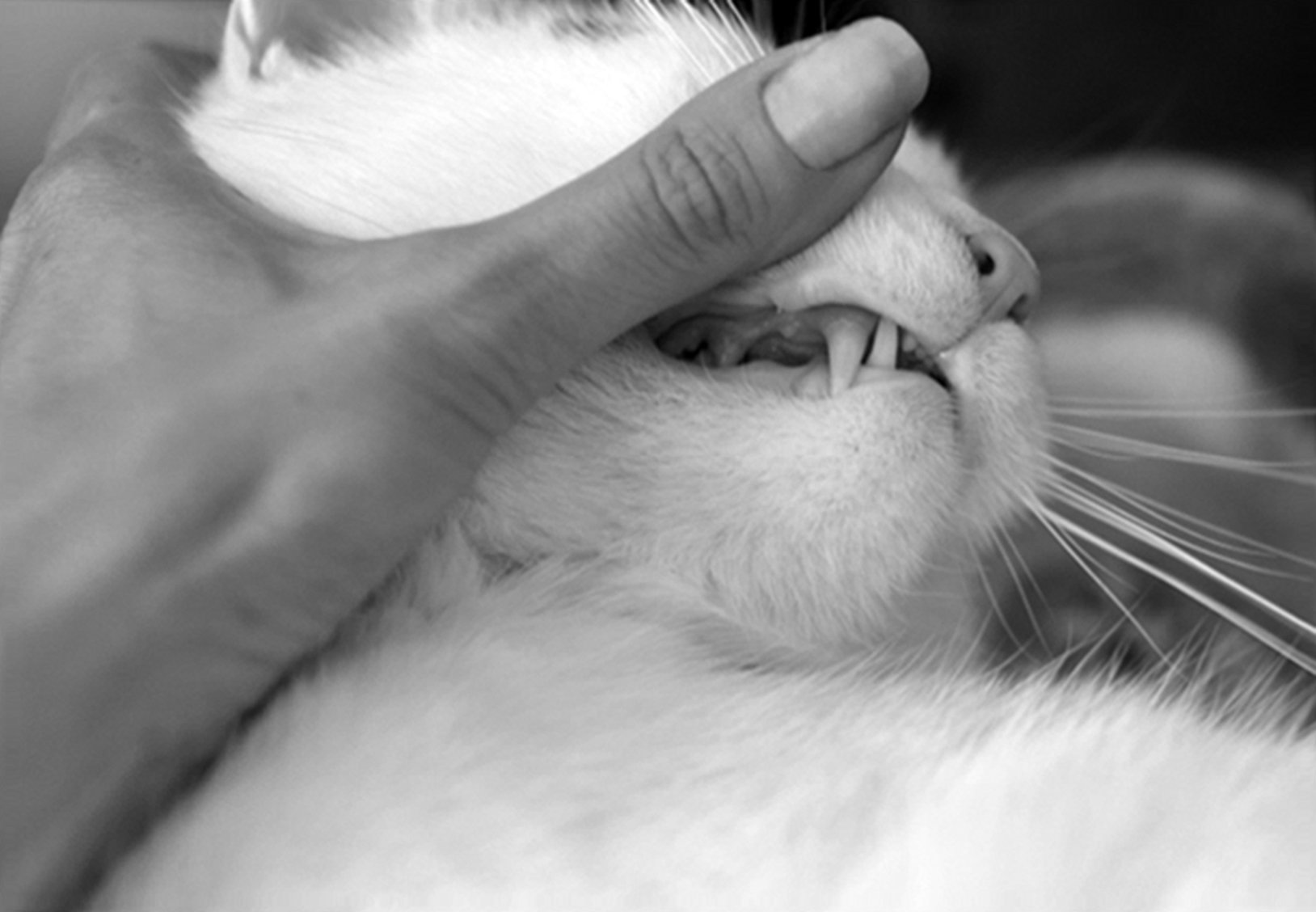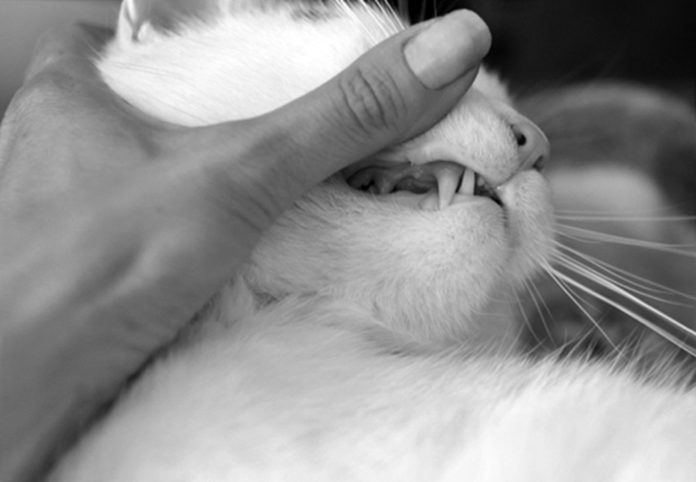Among all feline health problems, the most frequently observed disorders are those involving a cat’s teeth and their surrounding tissue. Indeed, it is estimated that as many as 90 percent of domestic cats will experience a significant tooth or gum disorder at some point in their lives.
Thinkstock

To an extent, says veterinary dental specialist William Rosenblad, DVM, genetics play a role in determining which cats are more susceptible than others to dental problems. It is true, he acknowledges, that some purebred cats — Maine Coons and Persians, for example — tend to be at elevated risk for some types of dental disease. Age, however, is not a significant determinant in whether a cat will experience severe dental problems, notes Dr. Rosenblad, a Tufts graduate who is chief of dentistry, oral medicine, and surgery at Angell Animal Medical Center in Boston. “I’ve seen some significantly geriatric cats with remarkably good dental health,” he says, “and I’ve seen some very young cats with horrific mouths.”
Two primary factors
In the great majority of cases, he points out, serious feline dental disease can be attributed to two factors: the mushy consistency of the canned food that domestic cats tend to eat these days; and a lack of awareness on the part of owners regarding the need to properly and routinely clean and brush their cats’ teeth. Compounding the ill effects of these two influences is the fact that too many owners are negligent when it comes to having their cats periodically undergo thorough oral examinations by a veterinarian.
According to Dr. Rosenblad, two disorders account for the vast majority of feline dental problems. Most frequently diagnosed is periodontal disease, which affects an estimated 85 percent of domestic cats older than three or four years of age. In this disease, layers of plaque — a thin film formed by bacteria — accumulate on the tooth surface.
If untreated, Dr. Rosenblad explains, this bacterial infection and the eventual immune response to it lead to severe gum inflammation (gingivitis) and destruction of the tooth support structures below the gumline. In cats, advanced periodontal disease can quickly progress to an end-stage condition for which extraction is the only reasonable treatment option.
A “close second” in terms of the frequency with which it is diagnosed, says Dr. Rosenblad, is a dental affliction formerly called “feline odontoclastic resorptive lesions (FORLS)” but now more simply referred to as “tooth resorption” or “resorptive lesions.” “I see this disease in 75 percent or more of the cats that I examine,” he notes. This disease is characterized by destruction of the tooth, most often below the gumline along the roots. These lesions, whose cause is unknown, progress and result in irreparable damage to affected teeth.
Some cats might be burdened with a specific health problem that requires them to rely solely on a specially constituted canned food. But for the great majority of cats, says Dr. Rosenblad, a cat’s dental health is likely to benefit significantly by consuming a diet of hard food or at least by a diet of canned food that is supplemented daily, if possible, with a generous serving of hard food. “Because of a cat’s dental anatomy,” he notes, “a diet of hard food and/or crunchy treats, accompanied by a ready supply of water, is definitely helpful from a dental standpoint.
Why dry food is helpful
“Cats have to chew it, and the mere act of chewing results in increased saliva release. The saliva rinses the mouth, and also promotes certain bacterial activity that is beneficial. Canned food is inherently stickier, and because cats don’t have to chew it, less saliva is released and, therefore, less rinsing takes place within the mouth. There’s nothing magical about that.”
The other key to maintaining a cat’s good dental heath is daily brushing, says Dr. Rosenblad. “We don’t want to see owners or veterinarians or groomers scraping a cat’s teeth,” he says, “because you can damage the gum tissue. What you want to do is to concentrate on brushing the outside of the upper teeth, with the goal of removing the plaque that builds up every day and hardens into tartar (calculus) within 24 to 36 hours. The plaque can be removed with a brush, but not so for the tartar.
“A good job of brushing shouldn’t take up minutes of your time — it can be done in a matter of seconds. The tooth brushes that I prefer are about the size of your little finger, with the bristles angled at about 45 degrees, and the toothpaste should be one that is specially formulated for cats. The brushing should be done with the cat’s mouth gently held closed. You sneak the toothbrush in between the cat’s lips and into the cheek, right on the outside of the upper teeth, circle it around for a few seconds, working from back to front, and then move to the other side. That’s about it — and then it’s time to reward the cat with a treat.” (See related sidebar on this page.)
Regular examinations
It also stands to reason, says Dr. Rosenblad, that every cat should periodically be examined by a veterinarian experienced in performing thorough examinations of the teeth (above and below the gumline); X-rays; thorough cleaning, scaling and polishing of teeth; and tooth extractions. “The owner should not go to the veterinarian with the notion that the visit will consist of just a cleaning and superficial exam,” he says.
“I’d prefer to have people prepared for an involved procedure and be happily surprised to find out that the cat’s dental health is satisfactory.” — Tom Ewing




